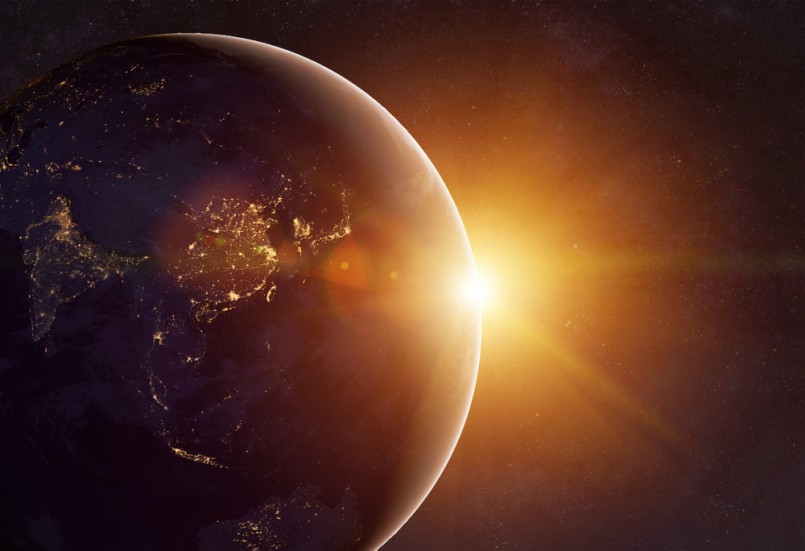Environment
Ozone hole is shrinking partially due to chemical ban

Image: Shutterstock/Skylines
In 1985 a discovery was made that the Antarctic ozone hole was a clear representation of our ability to directly cause harm to the environment. While as a society we’ve made many great changes to our lifestyles to leave less of a carbon footprint, globally we are still increasingly damaging the earth. That’s why when we heard the hold in the ozone layer is shrinking, it came as a huge surprise. Susan Solomon, an atmospheric chemist at the Massachusetts Institute of Technology and the leader of this study, said,
It’s a big surprise. I didn’t think it would be this early.
The hole is still closing at a glacial pace—it won’t completely close until midcentury at the earliest, but it is still reassuring to scientists who pushed for the Montreal Protocol that it was worth the fight. This protocol from 1987 was an international agreement that called for phasing out the industrial production of chlorofluorocarbons (CFCs), or chlorine-causing chemicals. CFCs trigger the destruction of the stratospheric ozone, which screens out cancer-causing ultraviolet light.
When springtime arrives, layers of depleted ozone open up over both poles. The cold temperatures of winter cause nitric acid and water to condense out of the atmosphere and form wispy clouds. The cloud particles are home to chemical reactions that release chlorine from CFCs, which is how the ozone is destroyed in the presence of light. That’s why ozone depletion is seen in spring (September in Antarctica), when light returns to the Antarctic region. The greatest loss is observed in October.
Solomon and her team conducted their measurements with satellites, ground-based instruments, and weather balloons. During their research, they found that since 2000, the September hole has shrunk by 4 million square kilometers.
The team had to verify that the declining amount of CFCs caused this recovery in the ozone layer, so they used a 3D atmospheric model to separate the effects of chemicals from those of weather. Solomon’s study found that only half of the 4-million-square-kilometer shrinkage was due to a reduction in chlorine and bromine. The other half appeared to be due to weather. Paul Newman, who runs NASA’s Arctic Ozone Watch website at Goddard Space Flight Center in Greenbelt, Maryland, stated that weather effects ought to cancel out on average, resulting in no trend. He said,
If we can’t explain half the signal, then can we really explain the 50% of the signal we think we know?
Newman believes the finding could point to a problem with Solomon’s trend. Or, it may reflect a shift in polar weather, driven by climate change. Newman sums it up best when he says,
She’s uncovered a real scientific puzzle here.





0 comments